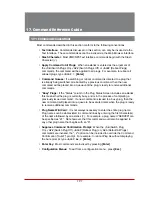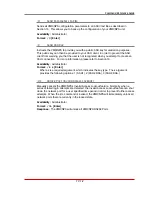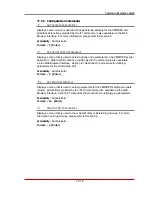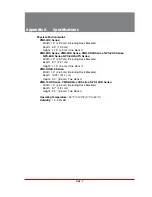
17-13
Command Reference Guide
/TELNET
Outbound Telnet
Creates an outbound Telnet connection.
Notes:
• In order for the /TELNET command to function, Telnet/SSH and Outbound
Service Access must be enabled for your user account as described in
Section 6.4. In addition, Telnet Access and Outbound Access must also be
enabled via the Network Parameters menu, as described in Section 6.8.1.
• If you have logged in via the Network Port, the /TELNET command will not
function.
Availability:
Administrator, SuperUser, User
Format:
/TELNET <ip> [port] [raw]
[Enter]
Where:
ip
Is the target IP address. The IP Address can be entered in either IPv4
or IPv6 format.
port
Is an optional argument which can be included to indicate the target port
at the IP address.
raw
Is an optional argument which can be included to indicate a raw socket
connection. In order to create a raw socket connection, the command line
must end with the text "
raw
".
/SSH
Outbound SSH
Creates an outbound SSH connection.
Notes:
• In order for the /SSH command to function, Telnet/SSH and Outbound
Service Access must be enabled for your user account as described in
Section 6.4. In addition, SSH Access and Outbound Access must also be
enabled via the Network Parameters menu, as described in Section 6.8.1.
• If you have logged in via the Network Port, the /SSH command will not
function.
Availability:
Administrator, SuperUser, User
Format:
/SSH <ip> -l <username>
[Enter]
Where:
ip
Is the target IP address. The IP Address can be entered in either
IPv4 or IPv6 format.
-l
(Lowercase letter "L") Indicates that the next argument will be the
log on name.
username
Is the username that you wish to use to log in to the target device.






















